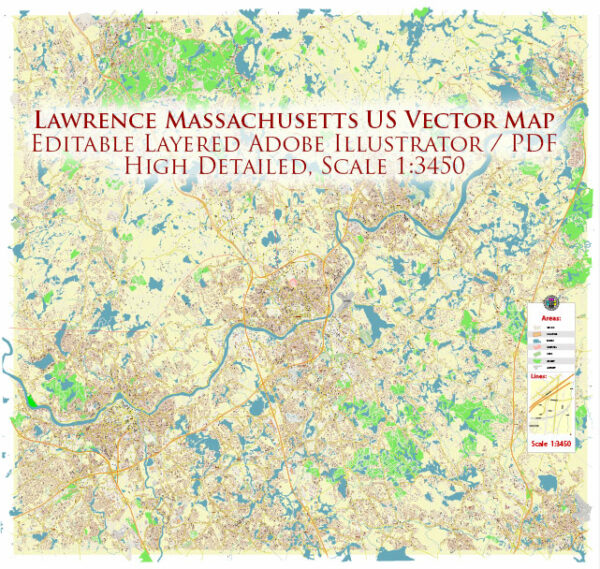Lawrence, Massachusetts, has a rich industrial history that dates back to the 19th century. The city played a significant role in the industrialization of the United States, particularly in the textile and manufacturing sectors. Here is an industrial description of Lawrence, Massachusetts:
- Textile Industry: Lawrence was a prominent center for textile manufacturing in the late 19th and early 20th centuries. The city was known for its many textile mills, and it earned the nickname “Immigrant City” due to the large number of immigrants, primarily from Europe, who came to work in the mills. The Great Stone Dam, built on the Merrimack River, provided hydropower to these mills, making Lawrence a hub for textile production.
- Manufacturing and Industry Hub: In addition to textiles, Lawrence was home to a wide range of manufacturing industries, including shoes, machinery, and paper products. The city’s location on the Merrimack River and its access to transportation networks, including railroads, made it an attractive location for industries.
- Labor History: Lawrence has a significant labor history, with notable labor strikes such as the Lawrence textile strike of 1912, also known as the “Bread and Roses” strike. This strike, led primarily by women and immigrant workers, sought improved working conditions and wages, and it had a lasting impact on labor rights in the United States.
- Decline and Revitalization: Like many industrial cities, Lawrence experienced a decline in its manufacturing base in the mid-20th century. However, in recent years, efforts have been made to revitalize the city’s economy. Some of the old mill buildings have been repurposed for residential, commercial, and cultural uses, contributing to the city’s economic and cultural renaissance.
- Education and Healthcare: Lawrence is also home to educational and healthcare institutions, including Northern Essex Community College and Lawrence General Hospital, which play important roles in the local economy.
- Cultural Diversity: Lawrence is known for its diverse population, shaped by waves of immigration over the years. This diversity has contributed to a vibrant cultural scene and has influenced the city’s culinary offerings and community events.
- Transportation and Infrastructure: The city’s transportation infrastructure, including highways and commuter rail lines, provides convenient access to the larger Boston metropolitan area, making it a strategic location for businesses and commuters.
In summary, Lawrence, Massachusetts, has a rich industrial history, with a focus on textiles, manufacturing, and labor activism. While its industrial landscape has evolved over the years, Lawrence remains an important part of Massachusetts’ economic and cultural landscape.


 Author: Kirill Shrayber, Ph.D.
Author: Kirill Shrayber, Ph.D.